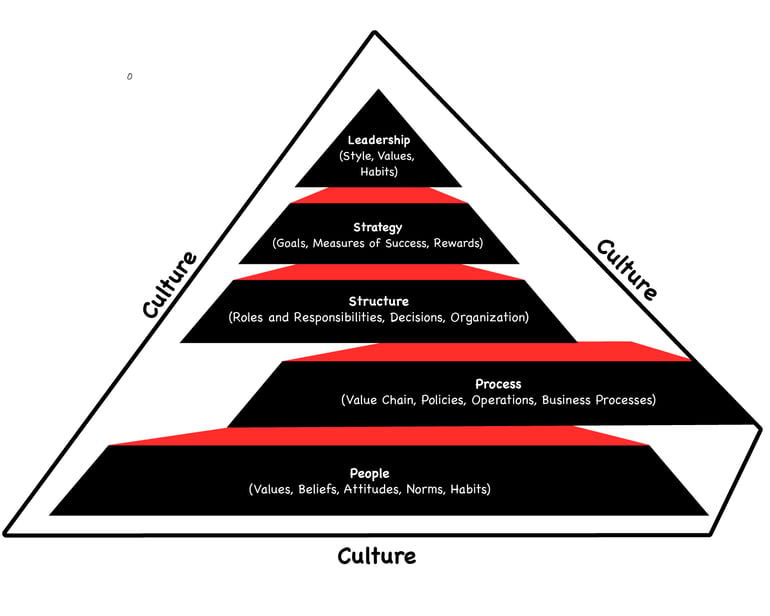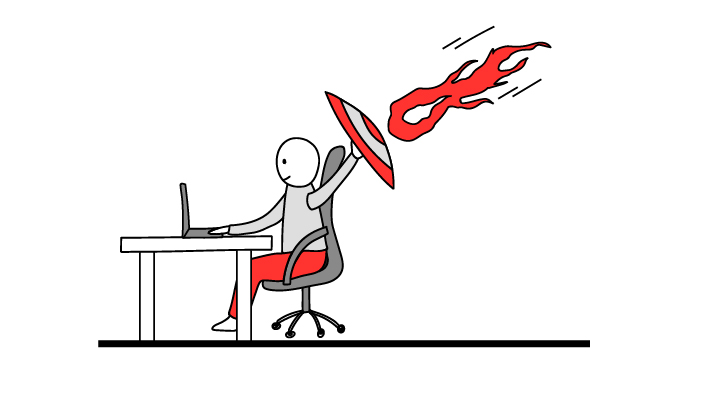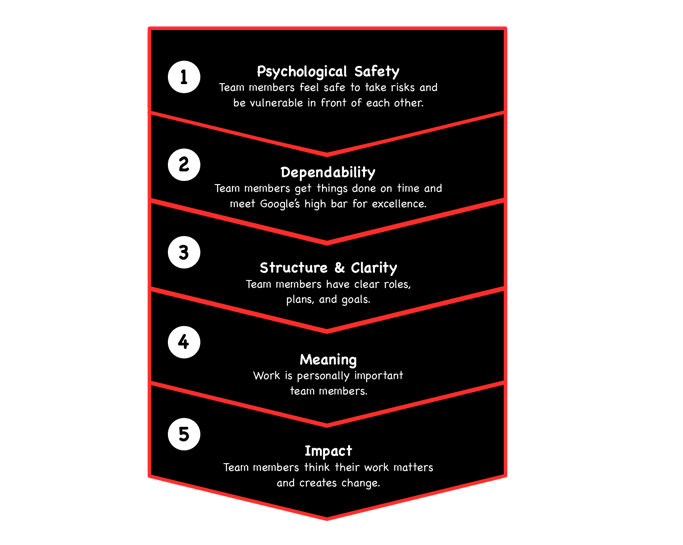Perhaps unsurprisingly, the topic of resilience is something that’s been explored and discussed a lot lately. Early in the pandemic, Container Solutions’ co-founder Pini Reznik published a free eBook on the “The Resilient Company”, to help leaders survive and navigate the sudden crisis. The topic feels worth revisiting now, partly because the pandemic has taken longer and had more impact than, I suspect, most of us thought it would at the start, and partly because we’ve all learned a lot about personal and corporate resilience over the last two years.
Elsewhere in this WTF collection Sarah Wells describes her experience at the Financial Times, applying lessons from SRE to business continuity. In this piece, we want to consider how organisational culture provides the foundation on which resilience stands or falls. But first, we need to consider:
- What a resilient culture looks like
- How it shows up
- Whether it’s a strength, weakness, or something in between
What is culture?
Culture is perhaps one of those things we recognise when we see it, but struggle to define clearly. However, to build a culture that supports and enables resilience we need to understand what it is, and we must design it deliberately.
Organisation Culture is described in many different ways:
- The lowest common denominator of the worst behaviour leadership accepts, the things we can and cannot discuss (Johanna Rothman)
- The collection of values, expectations, and practices that guide and inform the actions of all team members (achievers.com)
- Shared attitudes, beliefs, customs, and written and unwritten rules that have been developed over time and are considered valid (Gotham Culture)
Another way of describing culture is simply the way things get done around here. The largely unwritten set of things that get acknowledged, allowed, overlooked, accepted, rewarded and punished both overtly and covertly.
Culture emerges whenever people collect and collaborate and, because it is inherent in the interconnections between and around people in any group, is unavoidable in any organisation. In other words your organisation has a culture, but without careful and deliberate design that culture will truly be the lowest common denominator of the behaviours in the group.
What creates culture?
There are many aspects and characteristics of organisational culture that have been identified through lots of different research studies over the years. In the Fundamentals of Leadership, the authors state that initial culture is established in the earliest days of an organisation’s formation and is a function of the founder’s values and principles along with industry demand. Together, these define the early values, goals, and assumptions that become “the way we do things”.
Once the initial culture is established, it is difficult to change. Many founders have made the mistake of not consciously and deliberately paying attention to establishing the culture they aspire to, leaving it to emerge without guidance. We see high-profile examples of that in organisations like Microsoft in the early years, Uber and others. Culture needs to be carefully nurtured and maintained from the beginning, or as the organisation grows it will likely rot and devolve.
As the organisation grows and evolves with new people coming into the mix and different pressures emerging and adapting, organisational culture changes through four mechanisms:
- New employees are attracted to organisations where they feel some alignment, where they think they will fit in, and where the values and goals align with their personal worldview. People will self-select in and out of organisations using an imperfect process to find cultures they feel attracted to.
- When new people join an organisation, the onboarding process gives them an understanding of the skills, behaviours, attitudes, and knowledge needed to function effectively in the group. This onboarding process is where employees learn about many of the unwritten rules that make the culture of the organisation.
- The style of leadership that is in place in an organisation directly and significantly contributes to the organisation culture. Do leaders motivate by making rewards contingent on performance? Do they role-model collaboration or competition? The role model leaders provide is one of the strongest factors in defining culture, and leadership behaviour cascades from the top down.
- Reward systems are another significant element of culture—what behaviours are explicitly rewarded and punished? Does the system reward behaviours or results, does it encourage teamwork and collaboration or does it pitch people against each other in a zero-sum bonus bunfight? Are people compared to each other or are they measured against a clearly understood standard for each role?
All of these factors result in a collective set of beliefs, values, attitudes, and behaviours that together become the culture of the organisation. Collectively these things can be made visible and measured, which makes it both possible and feasible to influence cultural change.
.jpg?width=770&name=Blog%202%20Diagram%204-100%20(1).jpg) Original image: Fundamentals of Leadership Chapter 12.4—Culture Creation and Maintenance - CC BY-NC-SA
Original image: Fundamentals of Leadership Chapter 12.4—Culture Creation and Maintenance - CC BY-NC-SA
Measuring culture
Whilst there are many measurement tools which can be applied to organisation culture, the instrument itself is not the important factor; the value is in both how the tool makes aspects of culture visible and how it allows conversations about what is there now and what different people in the organisation want to deliberately shift aspects of it towards or away from. Not everyone wants to become a Teal organisation tomorrow, but exposing the potential strengths and weaknesses inherent in the culture provides a basis for ongoing conversations and deliberate decisions about how and where it can and should evolve.
Understanding organisational culture, monitoring it, and actively working to maintain it are keys to long-term resiliency. Toxic cultures drive people away, and in this era of the “great resignation” culture is a competitive advantage and a key attractor to bring people into the organisation.
There are a large number of factors that can be included when looking to measure culture, but I recommend starting with these:
- Leadership: Leaders are the role models that everyone in the organisation looks to for examples as to what is OK and what is to be avoided. Every statement, action, and behaviour of a senior leader will be observed, analysed, and assessed as to how it impacts the people in the organisation.
- Environment: Do people feel fundamentally safe—physically, emotionally, psychologically? Do they enjoy being part of the group or are they on the outside?
- Communication: How easy is it for people to communicate across hierarchy? Can people raise concerns knowing that a senior colleague won’t shoot the messenger? Is it OK to communicate bad news quickly and clearly, rather than couching it in guarded language to avoid blamestorming? Do leaders communicate clearly, concisely and openly without laying blame or obfuscating truth?
- Wellness: Are people in the organisation taking care of themselves? Do they have time and space to breathe, to be creative, to look at aspects of their lives that are not work-related but are part of their complete being? Is it OK to not be OK? Can topics like mental health be discussed without stigma and ostracism?
- Agility: Can the way things are done be changed as needed? Are the processes and procedures so hidebound that they prevent creative and flexible thinking or can pragmatic solutions to novel problems emerge quickly, led by the people closest to the problem?
- Vision: Do the people in the organisation align with the vision, and is that vision real and actionable rather than just being trite words on a poster somewhere?
- Innovation: Do new ideas emerge when needed and from any level in the organisation structure? Can people share ideas across different areas of the organisation without being blocked by bureaucratic walls and barriers? Do innovative solutions get implemented in a reasonable timeframe or is there a graveyard where good ideas go to be buried, never to be seen again?
- Social Responsibility: Is corporate social responsibility something that is spoken about in a few glossy brochures but the reality on the ground is that no one seems to care? Are there programs in place to address social issues that people genuinely care about and is there a path to raise these issues inside the organisation?
How does culture change?
Dr Ahmed Sidky provides a view of culture as being an elastic band that is defined by and holds together all aspects of the organisation—people, process,structure, strategy, and leadership. He makes the point that these elements have tight interdependence and the culture of the organisation is the visible manifestation of these interrelated aspects. This organisational ecosystem needs to be seen as a complex adaptive system, with each aspect a complex system of its own.
 Original image: Ahmed Sidky, Achieving Sustainable Organisational Agility (2015)— used with permission
Original image: Ahmed Sidky, Achieving Sustainable Organisational Agility (2015)— used with permission
When looking to change the culture of an organisation, it is necessary to move all five of these elements in sync. Trying to enact change by just impacting one area results in a shift that is not sustainable.
Trying to enact change by adopting processes—perhaps adopting Agile development practices—results in a temporary shift, but without deliberately bringing change in the other four areas results in an imbalance as indicated in this diagram:
 Original image: Ahmed Sidky, Achieving Sustainable Organisational Agility (2015)—used with permission
Original image: Ahmed Sidky, Achieving Sustainable Organisational Agility (2015)—used with permission
Pushing against the constraining band of culture will result in the change snapping back; new processes may be implemented but without the supporting changes in other areas the new processes will be subverted and bypassed, or consumed with the old way of working, and the organisation will not get the benefit expected from the change.
Sustainable culture change requires moving all five aspects together, in small steps with clear communication about the goal and recognition of the impact of change.
According to Bryan Walker and Sarah A. Soule, changing culture requires a “movement not a mandate”. Engage people at all levels of the organisation with a clear understanding of the outcomes and goals of the change and a path to get them there. Culture change is many people changing many small things in concert and moving towards the same goal.
To make this work you need a call to action that resonates with people and clearly identified shifts in all the pieces that interconnect, along with safety so employees can make mistakes and learn along the way (what we think of as a learning organisation at Container Solutions), and leaders at every level who influence and nudge people towards the desired outcomes.
Resilience in the face of constant disruption
In the volatile and complex world that organisations operate in today, building the muscles to continually adapt and evolve is a key to becoming a resilient organisation.
Resilience is not about resisting change and standing firm—it’s about bending and adapting to the realities, having people who can shift with the context of the moment, having structures which provide a framework that supports flexibility and innovation, and enabling leadership at every level in the organisation and empowering people to make decisions.
A resilient culture means enabling people to thrive and grow irrespective of the context they find themselves in. Leaders can encourage a resilient culture through deliberately engaging their people across multiple dimensions:
- Mindset: The way we view the world or the lens we view the world through. This requires being curious not judgemental, being conscious of our natural negative bias and deliberately choosing to take a different perspective, asking “why not” rather than defaulting to “no”.
- Emotional intelligence: Helping people in the organisation recognise their own emotional reactions and manage how they respond to the emotional reactions of those around them. Managing our emotional response prevents overreaction and opens space for exploration of possibilities rather than catastrophizing about what could be wrong.
- Effective communication: Communication is a skill that can be built. Within and across an organisation, the way messages are communicated influences how they are received and how people react to them. Calmness and clarity rather than panic and fear mean people will hear not just the words but the feeling behind them.
- Psychological safety: As we’ve noted before on WTF and elsewhere we put a great deal of emphasis on psychological safety at Container Solutions. This much-overused, poorly understood aspect is key to effective results and a resilient culture. The feeling that “I can take a risk, they’ve got my back” makes it OK to experiment, to try new things and rapidly change direction when it’s needed. Mistakes will happen, but a psychologically safe environment enables us to learn from mistakes rather than avoiding them at all cost.
How to build a resilient culture
The recipe for resilience is straightforward, but far from simple. It requires supporting people in the organisation so they become resilient in themselves and are able collaboratively to cope with the constant buffeting in the crazy world we live in today.
There are some pointers, such as the 5 Starting points from Lumapps and research published by George S. Everly, Jr. in HBR:
- Have structures that support decision-making at the edge; empower the people closest to the customer to respond in the moment without needing layers of permission and bureaucracy.
- Constantly be aware of and actively support the physical and mental well-being of people in the organisation. Have real wellness and employee-assistance programs and make it truly safe to access them.
- Encourage diversity in every aspect—actively work to create a more diverse workforce, not just in the big visible elements like race and gender, but consider cognitive diversity; make it easy for people with different abilities to truly be included.
- Encourage and support constant learning, formal and informal, for everyone in the organisation. Train leaders to lead in the new world, train people how their work needs to adapt, and in the new tools and technologies; truly become a learning organisation.
Resilience is not a buzzword—it’s a competency that individuals, teams, and organisations need to be effective—perhaps even to survive—in the volatile world where we find ourselves now. The pace of change is increasing; the marketplaces we engage in are in flux; society is in turmoil.
To thrive in this crazy environment we need to build the muscles of resiliency based on treating each and every person in our organisation’s ecosystem with respect and dignity. Treat people well and they will reciprocate; empower your employees and they will do amazing things for your customers— from that profit and sustainability will follow.
|
Psychological safety is such a key element that it’s worth calling out the work done at Google to explore what makes a great team.
|



 Previous article
Previous article
